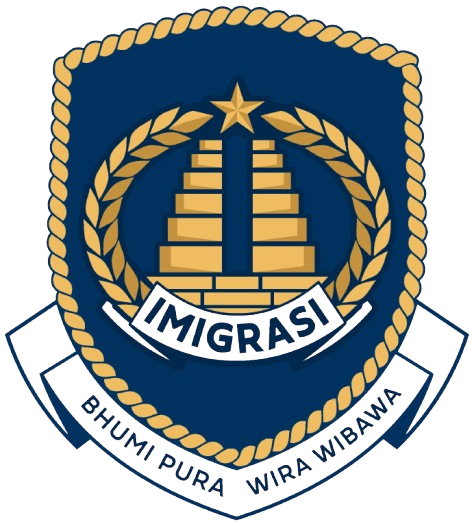Challenges of Adopting Digital Solutions in Immigration Processes in Lampung Barat
The move towards digital solutions in immigration processes presents a unique set of challenges in Lampung Barat, a district in Indonesia that experiences a diverse flow of migrants. Despite the various benefits that come with digitalization, including increased efficiency and enhanced accessibility, the implementation of these solutions is often marred by several complex issues. This article delves into the specific challenges faced in Lampung Barat regarding the adoption of digital solutions in immigration processes.
1. Digital Literacy and Skills Gap
One of the primary hurdles in implementing digital solutions is the varied level of digital literacy among both immigration officials and the local population. Many individuals involved in the immigration process, from officials tasked with processing applications to migrants themselves, may lack adequate digital skills necessary to navigate new systems effectively. The disparity in educational backgrounds can hinder the smooth adoption of technology. Continuous training and development programs are crucial but may not be readily available or may require substantial investment from the local government and agencies involved.
2. Infrastructure Limitations
Lamung Barat faces significant infrastructural challenges that hinder the rollout of digital immigration solutions. Many areas within the district still lack reliable internet connectivity, which is essential for accessing online immigration services effectively. Poor infrastructure not only affects government operations but also complicates the ability of migrants to access services, leading to increased processing times and frustration. Upgrading technology infrastructure requires financial resources, strategic planning, and long-term commitment from both local and national governments.
3. Resistance to Change
Cultural resistance to adopting new methods is a significant barrier in the transition to digital solutions for immigration processes. Many officials are accustomed to traditional methods of processing applications, which can result in apprehension toward changing established processes. This conservatism stems from a fear of the unknown and concerns about job security. Strategies for effective change management, including stakeholder engagement and demonstrating the benefits of digital solutions, are essential to mitigate this resistance.
4. Data Security and Privacy Concerns
The implementation of digital systems raises critical concerns about data security and privacy. Immigration processes involve sensitive personal information, including biometric data and personal histories. In Lampung Barat, the lack of robust cybersecurity measures can deter stakeholders from fully accepting digital solutions. Instances of data breaches or unauthorized access could not only harm individuals but also erode public trust in the immigration system. Investing in secure infrastructures and strict regulations around data use is vital to fostering a secure environment for adopting digital solutions.
5. Interoperability with Existing Systems
Integrating new digital solutions with existing administrative systems is often challenging. In Lampung Barat, various government agencies utilize legacy systems that may not be compatible with modern digital applications. This lack of interoperability can create silos of information, leaving officials unable to access critical data quickly. Effective digital transformation requires comprehensive planning and collaboration among different agencies to ensure that new systems can communicate with existing ones.
6. Budget Constraints
Financial limitations pose a considerable obstacle in implementing digital immigration solutions. The costs associated with developing, deploying, and maintaining these systems can be significant, particularly for local governments. Lampung Barat may struggle to allocate sufficient funds to cover these expenditures, which can delay or deter the adoption of digital solutions. Creating partnerships with private sector stakeholders or seeking national or international funding may offer viable avenues for overcoming budget constraints.
7. Language Barriers
Another relevant challenge in Lampung Barat’s immigration processes is language. Indonesia is a linguistically diverse nation, and many immigrants may speak languages that are not well-represented in digital solutions developed in Bahasa Indonesia. When digital platforms do not accommodate multiple languages, it can lead to misunderstandings, misinterpretations, and an overall exclusion of non-Bahasa speaking migrants. The development of multilingual solutions is essential to ensure inclusivity in immigration processes.
8. Regulatory Frameworks lagging Behind Technology Trends
The legal and regulatory frameworks currently governing immigration processes may not be fully equipped to address digital transformations. Lagging legislation can create ambiguity around the legality of digital submissions, e-signatures, and electronic records. This situation can lead to confusion among both officials and migrants about the validity of digital processes. Policymakers in Lampung Barat must work collaboratively to update legal frameworks that support and adapt to emerging technologies, thereby fostering a smoother transition to digital systems.
9. Complexity of Migration Profiles
The diverse migration profiles in Lampung Barat complicate the design and implementation of digital solutions. Migrants may come with varied backgrounds, needs, and reasons for seeking immigration services, from labor migration to asylum applications. Developing digital platforms that can cater to such complexity requires extensive research and user-centered design. Furthermore, training materials and support services must be tailored to accommodate various migrant demographics, necessitating additional resources.
10. Dependence on External Vendors
Many digital solutions are often developed in partnerships with external vendors who may not fully understand the local context. Relying on these vendors can create dependencies that affect the sustainability of digital solutions. If vendors do not provide ongoing support, or if their systems are not adaptable to local needs, it could lead to failures in service delivery. Collaboration with local tech experts and stakeholders can enhance the relevancy and sustainability of digital immigration solutions.
11. Public Awareness and Trust Issues
Lastly, public awareness and perception play crucial roles in the adoption of any new technology. A lack of knowledge about the available digital solutions may result in underutilization or outright skepticism. Building trust through awareness campaigns that highlight the benefits and security of digital processes is indispensable. Engaging community leaders and influencers to disseminate information can create a more favorable environment for digital adoption in immigration processes.
Addressing these challenges is crucial for improving immigration processes in Lampung Barat as the district works towards modernizing its system amidst an evolving global landscape. The integration of effective digital solutions has the potential to streamline processes, enhance security, and improve overall service delivery, but only if the numerous challenges can be adequately managed and overcome.

